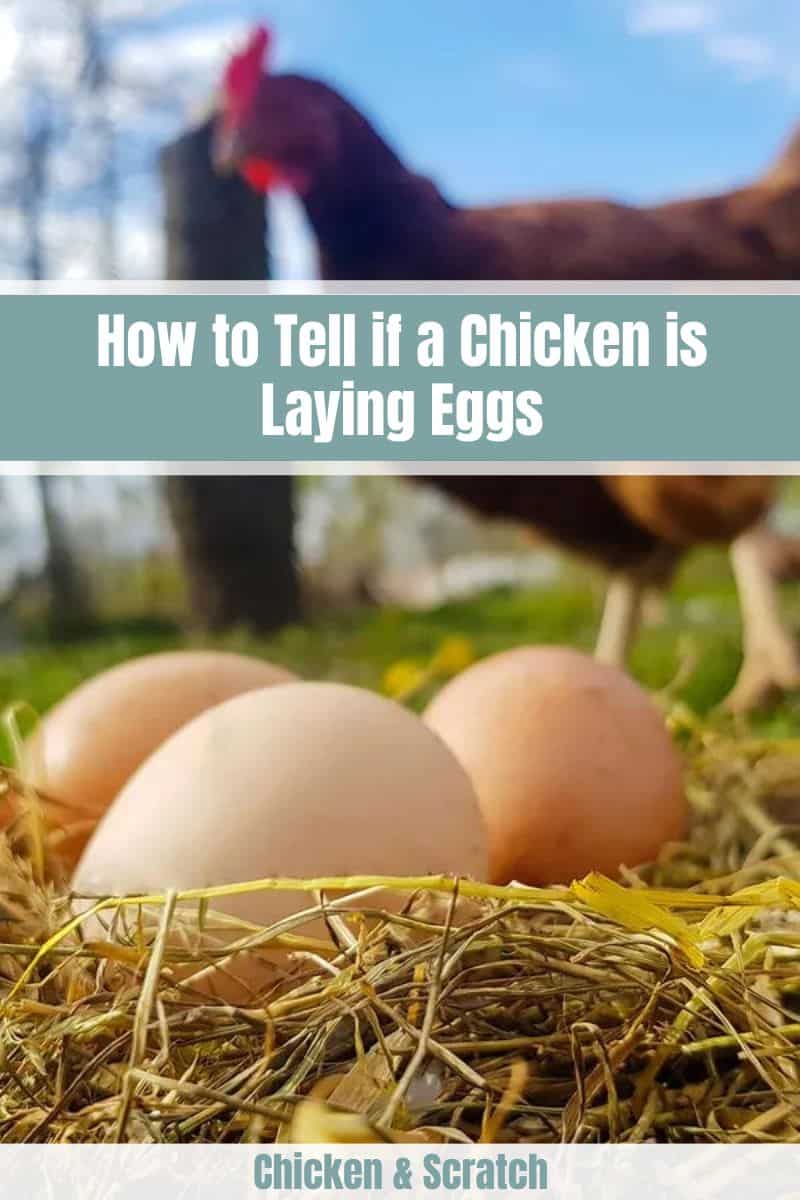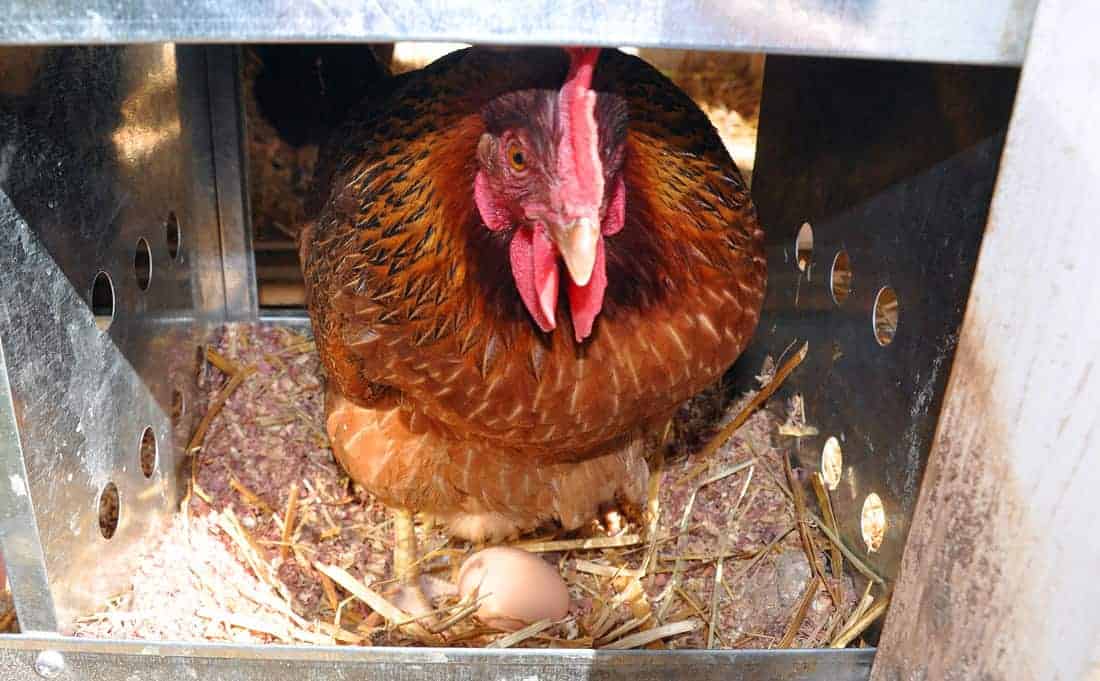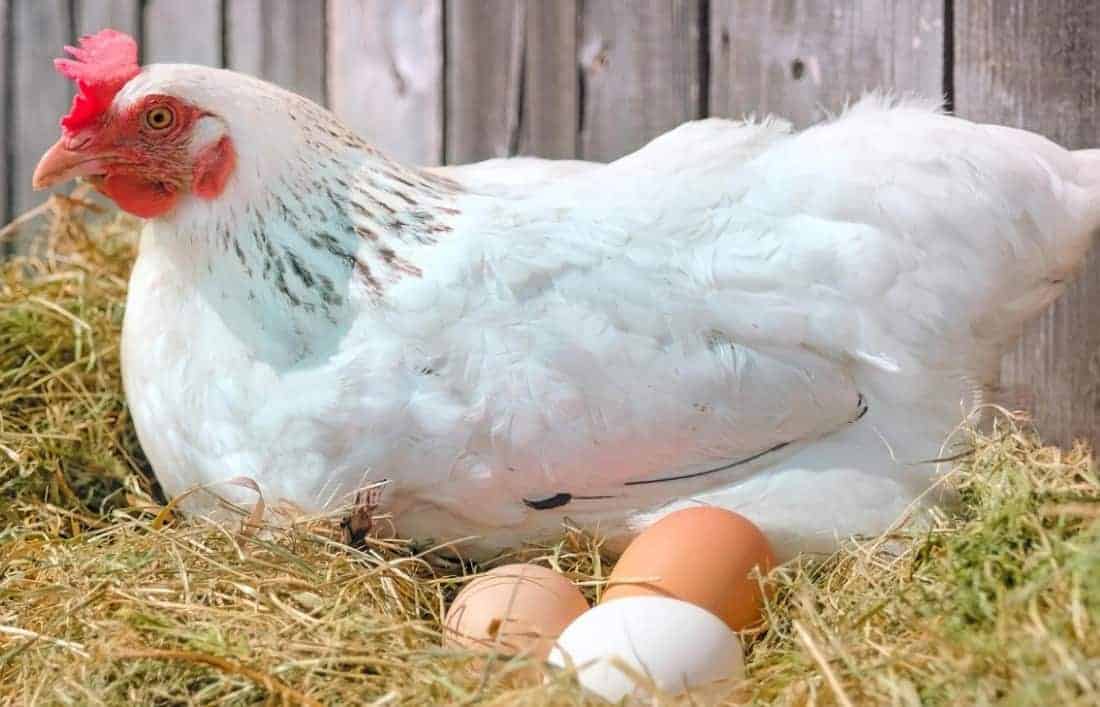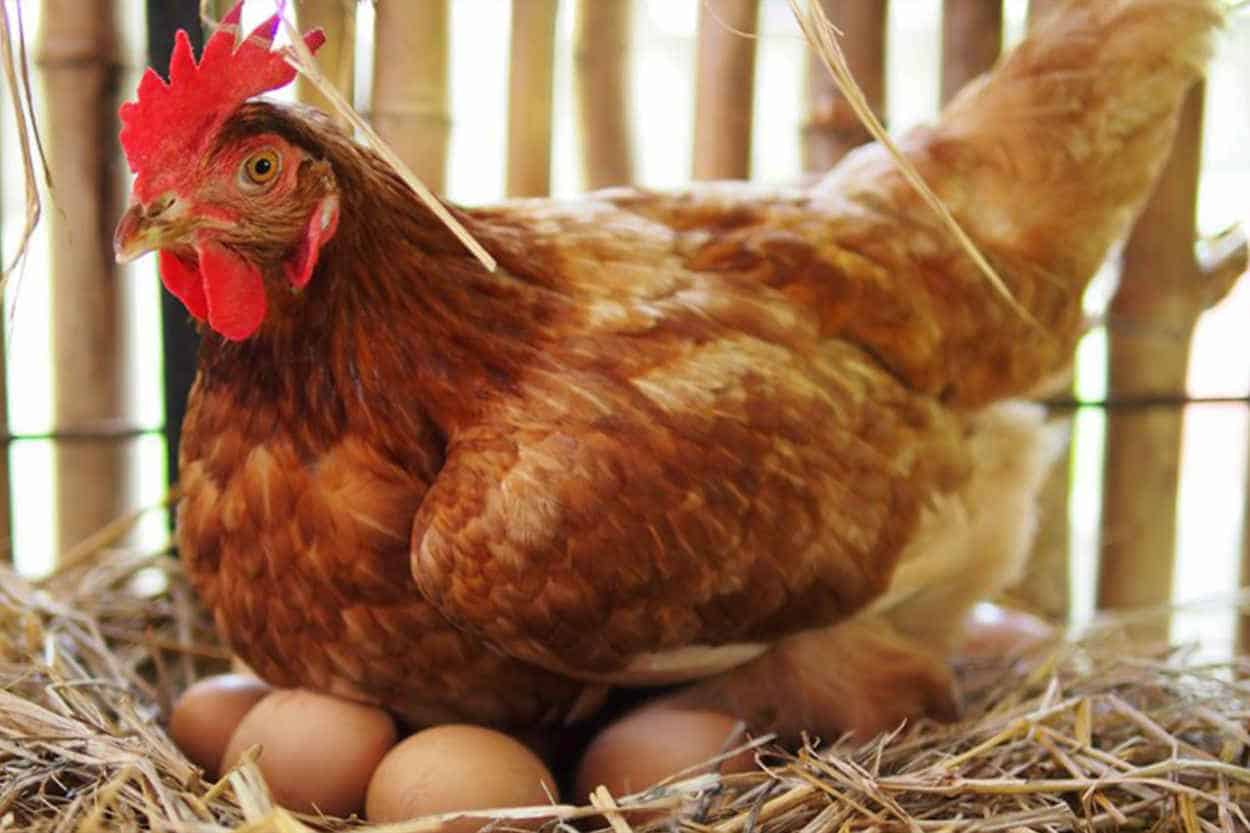If you’re raising your chickens for eggs, then it’s just natural that you want to know the signs they show before doing so. With this article, we can help you with that!

Here are eight signs you need to know. By the end, you’ll know how to tell if a chicken is laying eggs!
This article will cover:
- When do Hens Start Laying?
- Physical Signs of a Laying Hen
- Behavioral Signs of a Laying Hen
- How to Check for Egg-Laying Hen?
- FAQ
When do Hens Start Laying?
| Age | Stage of Egg-Laying |
| Below 16 weeks (Pullet) | No eggs |
| 16 to 18 weeks | Start of Egg-laying (Especially for Egg-laying Breeds) |
| 24-30 weeks
|
Consistent start of Egg-laying
Few eggs per week |
| 30-35 weeks | Increasing Yield |
| 35-70 weeks | High production and Maximum yield |
| 70+ weeks | Declining and Eventually Stops |
The hen’s egg-laying can start as early as 16 to 18 weeks. That said, most begin to produce eggs consistently at 24 to 30 weeks.
Note that various factors also come to account when it comes to the timeline of egg-laying. Egg-laying-focused and dual-purpose breeds are more likely to produce eggs more often and in larger quantities.
The list of data is a rough estimate. Some hens stop laying before 70 weeks, while others continue after their peak.
The diet of your flock is also a factor. A hen with a bad diet is a chicken that will produce a minimal number of eggs. Sometimes none at all!
So, if you see these eight signs below around the start or peak of egg-laying, it’s a good sign that your hen is ready to lay some eggs.
Physical Signs of a Laying Hen

Let’s get into the easiest way to tell if a chicken is about to lay an egg: the physical signs. These are easy symptoms you can quickly check if your chickens are laying eggs.
Redder and Larger Comb and Wattles
One of the major signs of a hen going through egg production and release is her larger, redder comb and wattles. She will also feel plumper to the touch. This is due to the hormone increase during a hen’s egg production and release stage.
That said, be mindful if this sign happened during the pullet age (around eight weeks or so). It might signify that your pullet is a he, not a she! Roosters show a sudden increase in wattles and combs during that time, so keep that in mind!
Pelvic Bones Spacing
Measure the distance between the pelvic bones of a hen, using your fingers side by side. If three to four fingers fit into the space, she will likely lay eggs. A space of two fingers or smaller indicates that she is not laying eggs on a consistent basis.
Vent Size and Appearance
You might notice a sudden change in its vent. It will be moist, pinkish, and appear larger than usual.
You will also notice some pulsing. If you note this symptom, there’s a high chance that your hen will lay in no time.
On the other hand, if your hen is not ready to lay, the vent will be yellowish and dry. As no egg will pass through, lubrication is not needed in the area.
Body Shape and Appearance
As the egg-laying season progresses, your hen’s legs will gradually lose their color. Don’t worry, as this is part of the process!
Away from their usual yellow tone, your hens’ legs can appear pale pink or even grayish. It’s natural, and after your hen takes a restful molt and recovers all necessary nutrients, it will return to its former state.
You may also want to watch her abdomen; if it’s plump, soft, and flexible, chances are she’s getting ready to lay down some eggs.
Behavioral Signs of a Laying Hen
With the physical signs in mind, let’s get into the secondary way you can tell that your chickens are about to produce some eggs. It also comes with the following behavioral manifestations, such as:
Nesting Behavior
Your chicken might show more nesting behavior when it is about to lay eggs. It includes checking around their nesting box and going around the coop in search of something. Most often than not, they are searching for a place to lay their eggs.
You might notice them going in and out of their nesting box. Even squatting on top of the eggs in the nesting box!
Do you know you can also trigger this response and get them to lay eggs in your desired nesting place?
Chickens are known to go with the behavior of the flock; laying eggs is not an exclusion. Many hens will lay an egg in the place other hens do as well. You can use real chicken eggs, wooden eggs, or even a golf ball to trigger this instinct.
Squatting Posture
Squatting posture, also known as submissive squat, is a telltale sign that your hen might be ready to lay some eggs. It’s especially true if you or a rooster approach it, and it suddenly goes to a squatting position.
Vocalizations and Communication
Have you ever heard of the ‘egg song’? Most hens instinctually vocalize during nesting and egg-laying time.
This vocalization is a way to deter and confuse predators away from the flock. This way, their eggs can be protected.
Attention from the Rooster
You might notice that your rooster might be paying more attention to your flock. Then, it might be time for some eggs. You might notice that he will follow your hen and even make vocalizations to catch her attention.
How to Check for Egg-Laying Hens?

Now that you have a hunch that your hens are laying eggs, here are ways you can check it.
Nest-Trapping
Are you interested in breeding the right breed of hens? If so, a trap nest is a handy tool to check which of your chickens are laying regularly and how many eggs they produce.
Each female needs to be released and then recaptured after she’s laid her egg, making it a time-consuming task. Still, it remains a beneficial technique for discerning your hen’s egg delivery numbers and stats.
Physical Examination
If you are unable to watch over their nest box constantly, physical inspections of your coop or land every other day can be a more manageable task. However, you won’t be able to accurately identify the hen and type that laid the eggs.
Estimates may be made by counting how many hens are in your flock, but this method won’t provide specificity. If precision is not important, this is a convenient option.
Monitoring and Recording Egg Production
One of the best ways to know how many eggs your hens have laid is by monitoring and recording them. You can take out a simple notepad or even your phone and jot down the number of eggs your hens produce. This way, you can check if a particular hen is lacking.
Frequently Asked Questions

1. Why don’t my chickens want to lay eggs?
There are many things you need to consider if your hens are not laying eggs. If they are newly grown hen that hasn’t laid an egg ever since then, you might want to identify the sex of your chicken. Some roosters and hens of the same breed can be harder to differentiate.
However, if that’s not the problem, then it might be their diet or a stressful environment. A hen that is fed well will continue to produce eggs.
Chickens are consistently routine-oriented animals. Any disruption of this daily pattern can devastate their egg-laying cycle!
Whether introducing new hens to the flock, altering their diet, or becoming broody, these animals can become too overstimulated to even lay an egg. Even diseases and injuries can shut down a hen’s egg-laying productivity.
2. Factors Affecting Egg-Laying
There are many factors on how many and how big the eggs of your chickens are. But here is a short list you can reference from:
- Breed
- Age
- Diet
- Molting
- Stress
- Disease
If your chicken has all these factors in check, it is more likely to produce eggs.
3. Solutions and Suggestions to Stimulate Egg Production
If you want to try and improve your chicken’s egg production, you should start with their diet. Adding some parsley, garlic, and oyster shells will give your chickens many nutrients to produce eggs.
4. When to Consult a Vet or Chicken Expert
If you went over the factors and didn’t know why your chickens suddenly stopped laying, then a professional opinion might be what you need.
When your chickens stop laying eggs suddenly, you must check if a physical issue could be causing this. The problem could be as severe as an egg being stuck in its system (egg binding). Actions may vary depending on the severity of the situation, so make sure to investigate with a vet’s opinion.
In Conclusion
That’s it! With these eight signs, you can now know how to tell if a chicken is laying eggs. Ready some nesting boxes if you suspect your hen is about to lay some and enjoy delicious fresh eggs!

Joseph Hudson has been raising chickens for over 15 years. In 2018, he completed the Agriculture & Natural Resources program at Mt. San Antonio College. He currently raises over 1400 chickens on his 7.5-hectare farm. He keeps sharing his experience on raising healthy and happy chickens on Chicken Scratch The Foundry.








